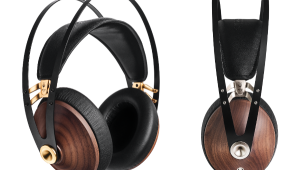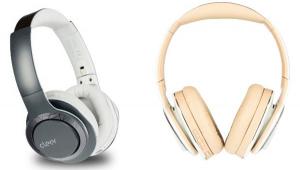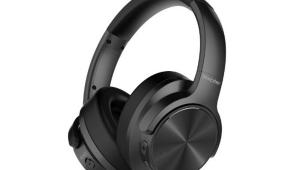Review: Value Gaming Headsets from Sony, Skullcandy, Sennheiser and PDP

So many awesome new video games have come out this fall, and there’s so little time. But perhaps the other members of your household don’t share your passion for stabbing corrupt politicians in the neck at three in the morning, or your neighbors don’t want to hear 140 MPH car crashes all evening long. But since you’ve been keeping up with all the newest titles, your wallet’s probably feeling a little light — so you can’t justify dropping $300 or more.
What’s a gamer to do?
Well, you’ve got some options: We’ve checked out four headsets under $200. The Sony Pulse, Skullcandy SLYR, Sennheiser U 320, and PDP Afterglow are aimed squarely at gamers who demand performance, but don’t want to shell out ridiculous amounts of cash for it.
Let’s dive in, shall we?
Sony PlayStation Pulse Wireless Stereo Headset Elite Edition
I admit it: I disliked last year’s PlayStation headset. A lot. Unboxing this year’s model, the Pulse Elite Edition, I immediately noticed an increase in both build quality and aesthetics. The Pulse’s industrial styling speaks volumes before you ever turn them on: the earcups marry chrome and brushed aluminum accents with high-gloss black plastic, and there’s a sturdy adjustable headband. Identical to last year’s set, setup is a breeze: plug the USB receiver into your PS3 or PC, turn the headphones on, and you’re ready to go.
There’s a decent amount of heft to the set, but, even after a four-hour gaming session, they didn’t pinch my ears against my head or feel uncomfortable. Overall sizing is very generous, too. I wear a size 7 and 5/8 fitted hat, and there was still room to adjust the headband if I needed. My ears fit comfortably within the well-cushioned earcups, which are attached to the frame with a resistance slider hinge that keeps them in place and adds to the overall sturdy feel of the set. There’s a mic hidden on the left earcup that sounds good.
Buttons and sliders rest along the edge of each earcup, but there are so many of them (“BassImpact,” voice/audio balance, sound mode, mic mute, volume, power) that even after a few days of use I was still fumbling to figure out what was what. More often than not, I’d take the headset off to adjust anything other than the sound mode. Ideally, each adjustment would make the onscreen display pop up, but that only happens when adjusting volume, and even then, it’s hit-or-miss. Sometimes adjustments caused a stutter in video performance, too.
While I felt the Pulse handled lossless music playback from my computer quite nicely, I was less impressed with its overall virtual surround sound quality for movies and games.
I tested out how the Pulse handled a 5.1 uncompressed surround field with Black Hawk Down on Blu-ray. During the mission prep scene in which Ewan McGregor’s character is told that he doesn’t need half his gear, the sound of an impact wrench in the background of the base sounded spatially correct and separated from dialogue and Faith No More’s “Falling to Pieces” playing in the background. Still, I felt that high frequencies were rolled off too low, and the low-end lacks punch. The sound of the Blackhawk’s side-mounted chaingun felt weak, as did RPGs ripping past the soldiers.
The bass slider helps when it’s maxed and the headset is in movie mode, but pushing it up past the first quarter of its range in the music or game presets produces too boomy an effect. I tried each of the different audio modes (gaming, shooter, fighting, racing) with Sleeping Dogs, BioShock, Mortal Kombat and Burnout: Paradise. The results were okay, but it was tough finding the equilibrium point where the bass sounded full, but before the unpleasant superficial rumbling took over.
All in all, this is a sturdy piece of hardware that makes sense for stereo listening, and for general PC use — I’m not sure if it earns its keep with its virtual surround reproduction. But if you’re interested in a solidly constructed stereo headset, it might be for you.
- Log in or register to post comments




































































